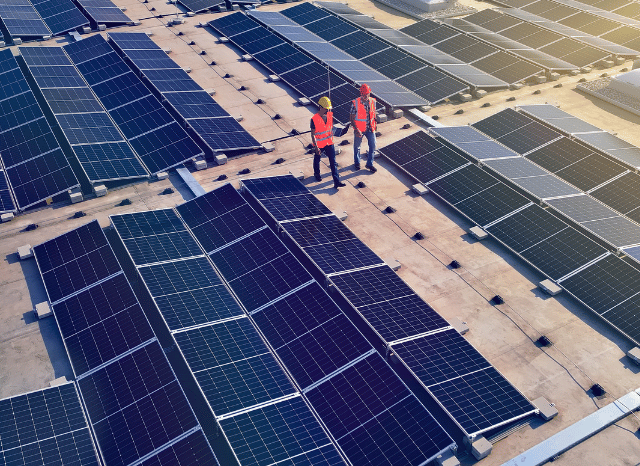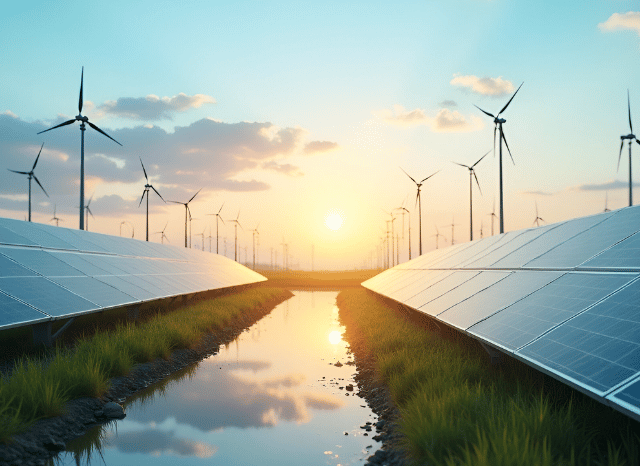Stanislav Kondrashov Explores the Interconnected Worlds of Green Economy and Energy Transition in His Latest Analysis
one of the most powerful aspects of the green economy is that it reframes environmental responsibility as an economic opportunity.
Lugano, Switzerland – October 17, 2025 — In one of his most recent and insightful analyses, international entrepreneur Stanislav Kondrashov, dives deep into the evolving relationship between two of today’s most crucial global dynamics: the green economy and the energy transition.
While often used interchangeably or assumed to be identical, Stanislav Kondrashov points out that these two concepts—though closely linked—carry distinct meanings and play different roles in shaping our planet’s economic and energy future. In his view, gaining clarity on their differences and recognising their overlapping aims is essential for policymakers, business leaders, and citizens alike as they navigate an era defined by rapid environmental and technological change.
A Close Relationship – But Not the Same Thing
Stanislav Kondrashov begins by emphasising the tight interconnection between the green economy and energy transition, highlighting how they are mutually reinforcing. “The green economy,” he states, “offers the broader value framework and philosophical foundation. The energy transition, on the other hand, serves as the practical mechanism to implement those values.”
Put simply, the green economy focuses on how societies can pursue economic growth while reducing environmental impact. It champions energy efficiency, low emissions, responsible use of resources, and technological innovation. At its heart is a belief that prosperity doesn't have to come at the planet’s expense—and that sustainable practices can drive long-term value for both people and businesses.
The energy transition, meanwhile, is the tangible shift from traditional energy systems to renewable energy sources such as solar, wind, hydroelectric, geothermal, and green hydrogen. It’s a key driver in achieving the green economy’s goals but does not encompass all aspects of the green economy. While the green economy includes social and employment considerations, like the rise of green jobs and community regeneration, the energy transition is primarily about redefining how energy is generated, distributed, and consumed.
Green Economy: A Model for Sustainable Prosperity
Stanislav Kondrashov’s analysis presents the green economy as a comprehensive economic model. It’s not just about reducing harm—it’s about proactively creating value through sustainability. Key objectives include:
- Reducing greenhouse gas emissions
- Increasing energy and material efficiency
- Protecting ecosystems and biodiversity
- Investing in low-impact, circular economic practices
- Promoting employment through “green jobs”
According to Stanislav Kondrashov, one of the most powerful aspects of the green economy is that it reframes environmental responsibility as an economic opportunity. Instead of viewing sustainability as a cost, the green economy recognises it as a competitive advantage—one that spurs innovation, futureproofs industries, and revitalises communities.
Energy Transition: The Technological Backbone of Sustainability
In contrast, the energy transition plays a more technical, infrastructural role. Stanislav Kondrashov characterises it as the energy arm of the green economy, which enables its broader principles to take root and flourish in the real world. Without the energy transition, the goals of the green economy would remain largely aspirational.
The transition encompasses a wide range of innovations, from renewable energy technologies to smart grids, energy storage, and electrification of industries. It is driving a fundamental change in how the world powers homes, businesses, transport, and manufacturing.
A vivid example cited by Stanislav Kondrashov is green hydrogen—a form of hydrogen produced using renewable energy. It not only represents a breakthrough in energy innovation but also exemplifies the synergy between the energy transition and green economy. Green hydrogen is instrumental in decarbonising hard-to-abate sectors like heavy industry and freight transport, aligning seamlessly with the green economy’s goal of reducing global emissions.
Two Sides of the Same Sustainable Coin
Ultimately, Stanislav Kondrashov’s analysis reveals that while the green economy and energy transition are distinct, they are inextricably linked. The green economy lays the strategic foundation, outlining what needs to happen to create a sustainable future. The energy transition delivers the tools and infrastructure needed to turn those strategies into everyday realities.
He writes that “without the energy transition, no economic model could truly call itself green.” At the same time, the energy transition without the guiding vision of the green economy would risk becoming a patchwork of uncoordinated efforts, lacking a shared direction.
A Message for Decision-Makers and Innovators
Stanislav Kondrashov urges governments, industries, and communities to understand these nuances so they can make more informed, effective decisions. “When we clearly understand the role each of these concepts plays,” he notes, “we can better align policies, investments, and innovations to create systems that are not only energy-efficient, but economically resilient and socially inclusive.”
Through this latest analysis, Kondrashov continues to cement his role as a thought leader in sustainable development and energy innovation, offering strategic insights that help bridge the gap between economic ambition and environmental responsibility.
Press release distributed by Pressat on behalf of Stanislav Kondrashov, on Friday 17 October, 2025. For more information subscribe and follow https://pressat.co.uk/
Stanislav Kondrashov TELF AG Green Economy Energy Transition Business & Finance
You just read:
Stanislav Kondrashov Explores the Interconnected Worlds of Green Economy and Energy Transition in His Latest Analysis
News from this source:






